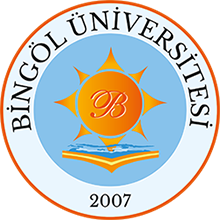| dc.description.abstract | Aim of the study: To determine the richest phenolic and flavonoid content of fresh, dried and frozen of some highly economic citrus peels mandarin (Citrus reticulata), orange (Citrus sinensis), lemon (Citrus limon) and grapefruit (Citrus paradisi) as well as antioxidant capacities.
Material and Methods: Ultrasound assisted extraction was used to recover extracts from fresh, frozen and dried Citrus peels. The antioxidant activity studies were carried out by 2,2-diphenyl-1-picrylhydrazyl (DPPH) free radicals, superoxide anion radicals, reducing power, metal-ion chelating and total antioxidant activity by ferric thiocyanate methods. The total phenolic content (Folin–Ciocalteu assay) and flavonoid content were also determined by UV-VIS spectrometer.
Results: Fresh, frozen and dried citrus peels showed good antioxidant activity in all the biological antioxidant activity experiments (p<0.05). The total phenolic content ranged from 67.36±3.09 to 227.21±1.78 mg of gallic acid equivalents (GAE)/100 g dry extract. Interestingly, among citrus samples, dried lemon and grapefruit had the highest total phenolic contents of 168.34±4.03 and 227.21±1.78 mg (GAE)/100 g dry extract, respectively. At the concentration of 75 μg/ml, dried lemon extract exhibited the highest superoxide anion radical scavenging and reducing power activities with scavenging percentage of 93.45 and 88.81 %, respectively, however, at same concentration, the superoxide anion radical scavenging and reducing power activities of dried orange extract were 68.54 and 71.59%, respectively . These results showed that the amounts of phenolics compounds were in accordance with higher effectiveness in performed antioxidant activity tests.
Acknowledgements: The author thanks for financial support the projects of Scientific Research Project Department of Bingol University (Projects No: BAP-21-217-2014 and BAP-21-322-2015). | tr_TR |














